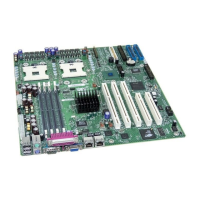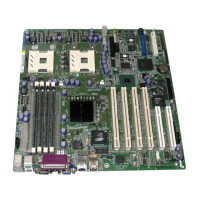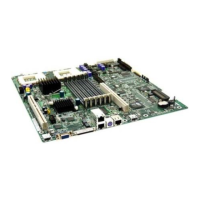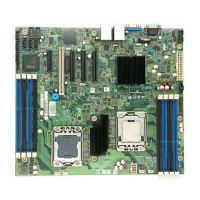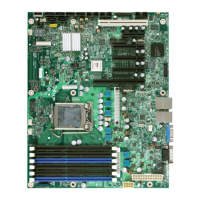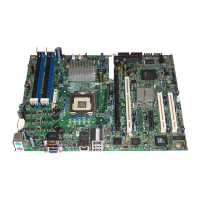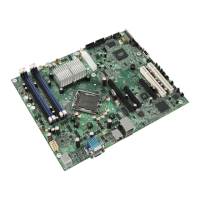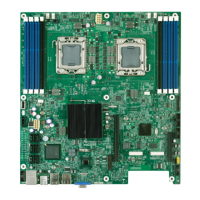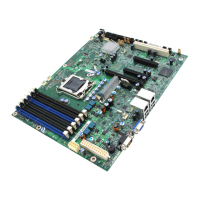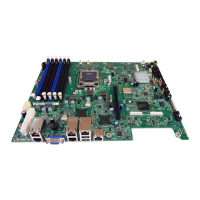Intel® Server Board SE7520BD2 Technical Product Specification BIOS Architecture
Revision 1.3 Intel Confidential
63
3.5.5.2 Changing the OEMlogo for Microsoft* Windows* 98/2000/XP
• Boot to Microsoft Windows 98/2000/XP.
• Download OEMLOGO.exe, Rombuild.exe, RomFile, and NewOEMlogoImage to the
hard drive.
• Run the following command:
OEMLogo <RomFileName> <NewOEMImageFileName> [/F or /FN or /N]
Usage:
OEMLogo <RomFileName> <NewOEMImageFileName> [/F or /FN or /N]
or,
OEMLogo <RomFileName> [/D]
Where,
[/F] - forces replacement of the OEM logo even if the logo formats do not match.
[/N] – inserts the 16-color BMP without converting it to the default AMI format.
[/FN] - forces replacement of the OEM logo without converting a 16-color BMP to the
default AMI format.
[/D] - deletes the logo module from the ROM file.
The system supports the following bitmap format:
• 256-color BMP, 640x480
Note: The Rombuild.exe file is NOT the same for both DOS and Microsoft Windows
98/2000/XP. The user must use the correct Rombuild.exe file, dependent upon whether he
or she is updating the OEM logo in DOS or in a Microsoft Windows 98/2000/XP environment.
3.6 OEM Binary
System customers can supply 16 KB of code and data for use during POST and at run-time.
Individual platforms may support a larger user binary. User binary code is executed at several
defined hook points during POST.
The user binary code is stored in the system flash. If no run-time code is added, the BIOS
temporarily allocates a code buffer according to [PMM]. If run-time code is present, the BIOS
shadows the entire block as though it were an option ROM. The BIOS leaves this region
writeable to allow the user binary to update any data structures it defines. System software can
locate a run-time user binary by searching for it like an option ROM, checking each 2 KB
boundary from C0000h to DFFFFh. The system vendor can place a signature within the user
binary to distinguish it from other option ROMs.
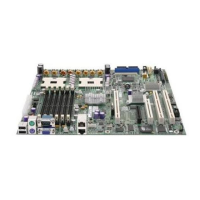
